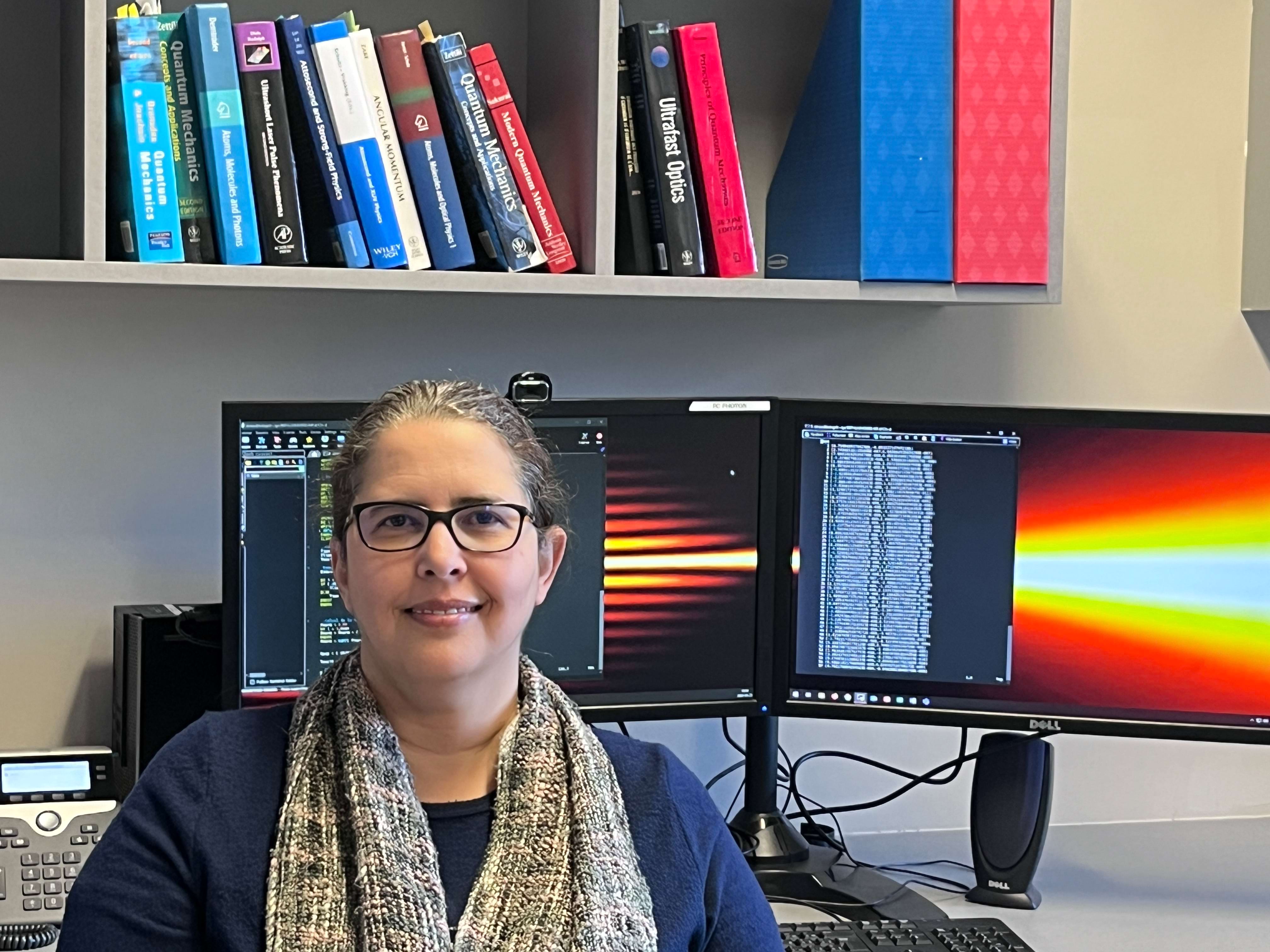Spring, 2024

“We are currently witnessing significant experimental progress in laser pulses,” says Barmaki, a physics professor at the Université de Moncton’s Shippagan campus. “The durations of these pulses are becoming increasingly short, with some on the order of 100s of attoseconds or less [an attosecond is equal to one quintillionth of a second.] These shortened pulses are excellent tools to help us probe and control the movement of electrons in atoms and molecules — the properties of matter.”
Barmaki and her team at the computational and photonic physics laboratory create simulations to help find ways to control the way electrons leave atoms and the amount of energy they will share. Her work uses numerical methods to accurately describe the energy spectrum of simple atomic and ionic systems, and her group has recently been studying “doubly excited” electronic states that form in the atomic energy spectrum following an excitation by an XUV laser pulse.
“This investigation has made it possible to detect and characterize new doubly excited states [DES] never observed to date,” Barmaki says. “The results of the simulations we are developing will also serve as support for future experimental studies, whether for calibrating laser parameters, proposing new investigation techniques or helping to analyze and explain the resonant features that manifest themselves in the recorded ionization signal due to the involvement of the DES.”
Barmaki says she couldn’t do her work without high-performance computing, which she uses to develop complex algorithms “capable of describing with very high resolution the interaction of the targeted atom with the laser pulse.
“The high-performance computing used in our experiments is based on developed theories using quantum physics, atomic and molecular physics and photonics,” she adds.
Developing these algorithms requires powerful computing and technical resources such as those provided by ACENET and the Digital Research Alliance of Canada.
“Such data processing powers allow us to carry out numerous large-scale projects at our lab and an essential part of that work involves the training and supervision of students at all levels,” she says. “Whether undergraduates for summer internships, master's students or doctoral students, they are all trained in computational physics and the exploitation of existing algorithms, and they develop their own algorithms by having access to ACENET and the Alliance’s supercomputers.”